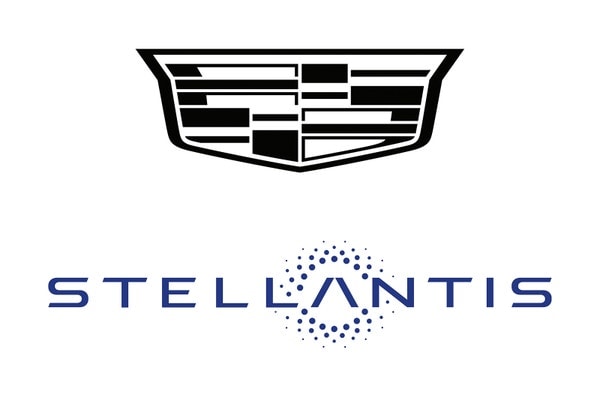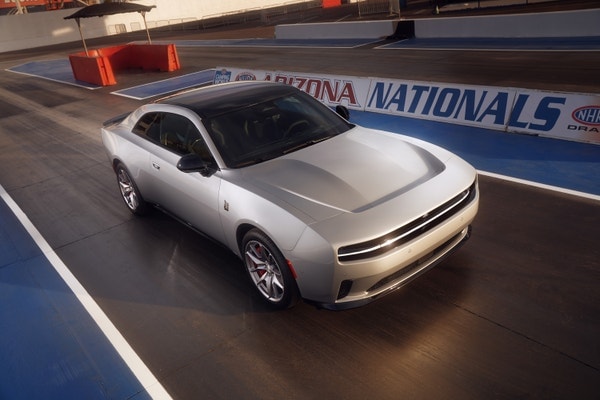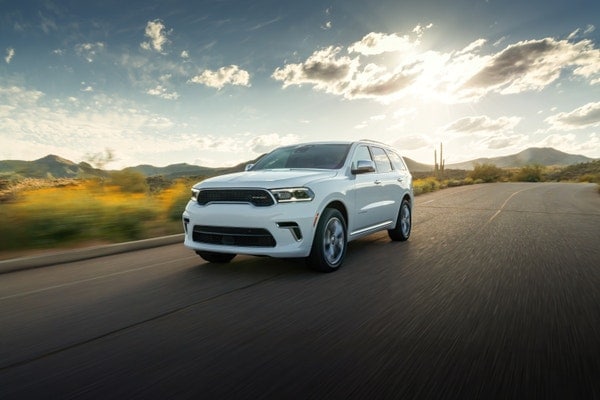Used 2013 Dodge SRT Viper Base Coupe Review
Consumer reviews
There are no consumer reviews for the 2013 Dodge SRT Viper Base Coupe.
Edmunds Summary Review of the 2013 Dodge SRT Viper Base Coupe
Pros & Cons
- Pro:Massive power from normally aspirated V10 engine
- Pro:outlandish cornering grip
- Pro:excellent touchscreen display and electronics interface
- Pro:still a raw sports car at its core.
- Con:No automated-manual transmission available
- Con:too stiffly sprung for many road surfaces
- Con:firm seats can limit long-distance comfort.
Full Edmunds Review: 2013 Dodge SRT Viper Coupe
What’s new
The 2013 SRT Viper will be an all-new model.
Edmunds says
The all-new 2013 SRT Viper sheds its Dodge name and about a hundred pounds, but gains a new look, a new interior, more power and more poise.
Vehicle overview
After a two-year hiatus, the Viper returns with a new look, a new interior, added sophistication and, yes, a new brand. No longer a Dodge product, the SRT-branded Viper maintains its reputation as a device capable of instilling abject terror unto its occupants. But now that terror has been tempered via now-standard traction and stability control systems that are only a small part of the supercar's overhaul.
As iconic as ever, the 2013 SRT Viper charges back with the same 10-cylinder power plant, familiar over-the-top styling and racetrack-ready chassis it's had since its inception, but all have been evolved and upgraded. As a result of careful engineering, engine output has climbed by 40 horsepower and 40 pound-feet of torque. For the first time in its high-g-loaded history, the chassis benefits from available two-mode dampers and a multistage stability control system that can be tailored from novice to expert with reduced amounts of electronic intervention. And, yes, it now has launch control.
Oftentimes, aerodynamicists and stylists work in concert to sculpt a car's body, and so it was with the 2013 SRT Viper. Smoother in shape yet still containing more air ducts than an HVAC contractor's van, the new Viper retains the familiar shape but it is now formed with a host of weight-saving carbon-fiber body panels giving it a new attitude and a fresh look all its own. Modern, new lighting all around helps set the mood as well. Optional exterior treatments and a wide array of colors for both interior and exterior allow the ample customization that Viper customers will demand.
Inside, the historically lacking and even hostile interior accommodations have been thoroughly upgraded and enlarged for added craftsmanship, comfort and function. A new multifunction steering wheel now does more than just point the car down the road. There's even a cruise control button. The instrument panel features a customizable backlit digital display, while the center stack features Chrysler's excellent 8.4-inch touchscreen with the UConnect electronics interface.
All this talk of sophisticated electronics perhaps would have you thinking the Viper has become dynamically distant, dulled by ghost-in-the-machine layers between the driver and the car, but you'd be wrong. The engine is still as violent as it ever was, and you can still turn off the safety systems if you want to relive the glory days of Viper hooliganism. But overall, the added refinement of the 2013 Viper has made it a much more livable choice for a supercar, thereby elevating it into the ranks of other worthy choices such as the 2013 Chevrolet Corvette ZR1, 2013 Nissan GT-R and 2013 Porsche 911.
2013 Dodge SRT Viper models
The 2013 SRT Viper is a two-seat supercar coupe available in base Viper or upgraded GTS trim. Standard features include 18-inch front wheels, 19-inch rear wheels, summer tires, automatic bi-xenon headlights, LED daytime running lights and taillights, keyless ignition/entry, full power accessories, cruise control, a tilt-only steering wheel, auto-dimming mirrors and automatic climate control. Electronic features include an 8.4-inch touchscreen, Bluetooth phone and audio connectivity and a nine-speaker sound system with satellite radio, auxiliary input, a USB interface and an SD card reader.
To the base Viper a buyer may opt for the Grand Touring package that includes a cupholder insert and floor mats, while the Uconnect media center is augmented to include a rearview camera, voice-controlled navigation with real-time traffic and SiriusXM travel information.
Opting for the Viper GTS nets the contents of the Grand Touring package plus unique exterior and interior treatments including a specific hood, wheel design and leather upholstery with contrasting stitching on the dash, door panels and center console. The seats get trimmed in leather with faux suede inserts, and the driver seat gains power adjustment. Audio is upgraded to a more powerful Harman Kardon system with 12 speakers. An even more high-end 18-speaker Harman Kardon system with Logic 7 surround-sound is a stand-alone option for either model.
In terms of mechanical upgrades, the GTS includes dual-mode driver-selectable Bilstein dampers and a multistage electronic stability and traction control system.
To either the base Viper or GTS, buyers may add an Interior or Exterior Carbon-Fiber package (or both) and an Advanced Aerodynamics package. The SRT Track Package includes upgraded two-piece lightweight brake rotors, ultra-lightweight wheels and softer-compound tires.
Only the GTS is available with the optional Laguna Interior package (black or sepia) that includes a faux suede headliner and unique premium leather surfaces.
The serialized GTS Launch Edition package adds the classic Viper GTS color combination of blue paint with white stripes, special wheels, the Track Pack's upgraded brakes, a unique steering-wheel badge, a dust cover, the Laguna Interior package, the 18-speaker Harman Kardon audio upgrade and a numbered dash plaque.
As before, a slew of wheels, exterior colors and stem-to-stern stripes are available from which to choose and customize.




Performance & mpg
The 2013 SRT Viper packs an 8.4-liter V10 that generates a peak output of 640 hp and 600 lb-ft of torque. Power is sent to the rear wheels through a six-speed manual transmission.
As one would expect, performance is phenomenal. Zero to 60 mph takes just 3.7 seconds. Of course, you'd likely expect fuel economy to suffer as well. It does, but not as much as previous Vipers. The new car returns an SRT-estimated 13 mpg city/22 mpg highway and 16 mpg combined.
Safety
Every 2013 SRT Viper gets standard antilock disc brakes and stability and traction control. The Uconnect system can further link drivers to emergency services and roadside assistance. Side curtain and side airbags are not available, however. A rearview camera is optional on the Viper and standard on the GTS.
In Edmunds brake testing, a Viper GTS with the optional Track Pack came to a stop from 60 mph in 101 feet, which is excellent for a sports car.
Driving
With the stated goal of providing the driving experience of a "640-hp Miata," the engineers had their work cut out for them. While we would never characterize the 2013 Viper as such, we will say that it is at once a more potent and less threatening car than it once was. Our test-driver said, "The old Viper too often drove you; the new Viper you drive."
This newfound confidence is due in part to the sophisticated traction and stability control systems, but the way the lighter car responds to just about every other driver request is improved. That said, this is a car that requires a firm hand on both the steering wheel and the shifter to make it do what you want. And finding its limits remains tricky. It doesn't feel like it wants to kill you anymore, but its limits continue to demand respect.
Our GTS test car rode acceptably in everyday driving, but compared to, say, the Corvette ZR1, the 2013 SRT Viper still comes up short in ultimate comfort and control. The Street setting will likely be plenty firm for nearly every occasion, and the Race mode will prove to be harsh and tends to make the car nervous-feeling on any surface other than a billiard-table-smooth racetrack.
As before, the monumental engine sets the tone for the overall driving experience, with its signature V10 warble and tidal wave of torque. The shifter is remarkably light and precise and now sits lower than it once did, offering more comfortable use. Steering feel and feedback are definitely better than they once were, yet limited visibility still makes the car difficult to place with confidence on tight, curvy roads.
Interior
The Viper's all-new interior marks the most important improvement to this iconic two-seater. Thanks to added interior space, revised seats and adjustable pedals, the new Viper will fit nearly anybody. Incidentally, anchors for three- or six-point racing harnesses are standard for those who are so inclined. Regardless of trim, the racing-sourced shell-type seats are firm but supportive.
Unlike the car it replaces, the cockpit is thoughtfully padded in the right places, features high-quality stitching where it can be seen and felt, and has a dashboard that is highly legible and functional with a configurable digital instrument cluster. The center stack controls are logical, and we particularly like the large central display screen and its easy-to-use virtual buttons and menus.
Storage is limited, but as many flocked bins and cubbies as would fit are a vast improvement over the previous car's utter lack of interior storage. The trunk is surprisingly spacious, measuring just over 14 cubic feet.
Edmunds Insurance Estimator
The Edmunds TCO® estimated monthly insurance payment for a 2013 Dodge SRT Viper in Ohio is:
not availableRelated Used 2013 Dodge SRT Viper Base Coupe info
Recent automotive news
- Ford F-150 Raptor vs. Ram 1500 RHO: Off-Road Beast Trucks Compared
- 2025 Ram 1500 RHO First Look: Don't Call It a TRX
- 2025 Chevy Equinox Slides in Under $30,000
- The Subaru Legacy Will Die in 2025
- BMW 4 Series Gran Coupe Gets the M4 CSL's Rad Taillights
- 2025 Mercedes G-Class EV First Look: 4 Motors, 579 HP and a Really Weird Name
- 2025 BMW i4 Is Refreshed, But You'll Have to Squint to Notice the Differences
- Hotter Kia EV9 GT Coming Next Year
- Is Ram's Off-Road Lineup Missing Out?
- 2025 Chevy Corvette Updates: New Colors, New Wheels, Same Attitude
Popular new car reviews and ratings
- F450 For Sale
- GT Shelby 500
- Cooper S Mini Convertible
- Audi TT
- Mercedes Benz Metris Van
- Eq C
- Audi RS RS6
- Toyota Corolla Hybrid Cars
- CLS 63 Amg
- Rolls Royce Cullinan
Lease deals by make
- Chevrolet Lease Deals
- Genesis Lease Deals
- Cadillac Lease Deals
- Hyundai Lease Deals
- Audi Lease Deals
- Ford Lease Deals
- GMC Lease Deals
- BMW Lease Deals
- Buick Lease Deals
- Honda Lease Deals